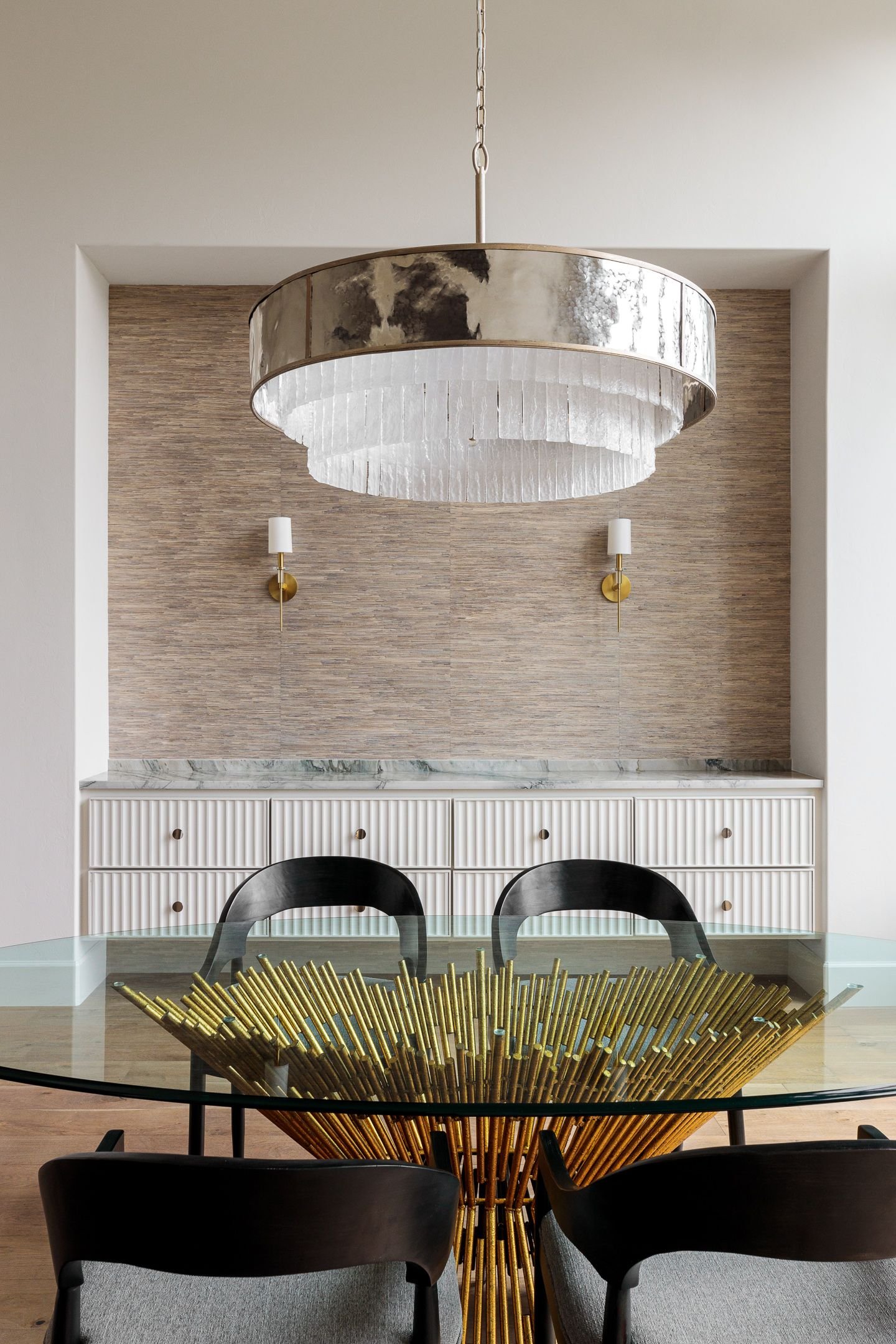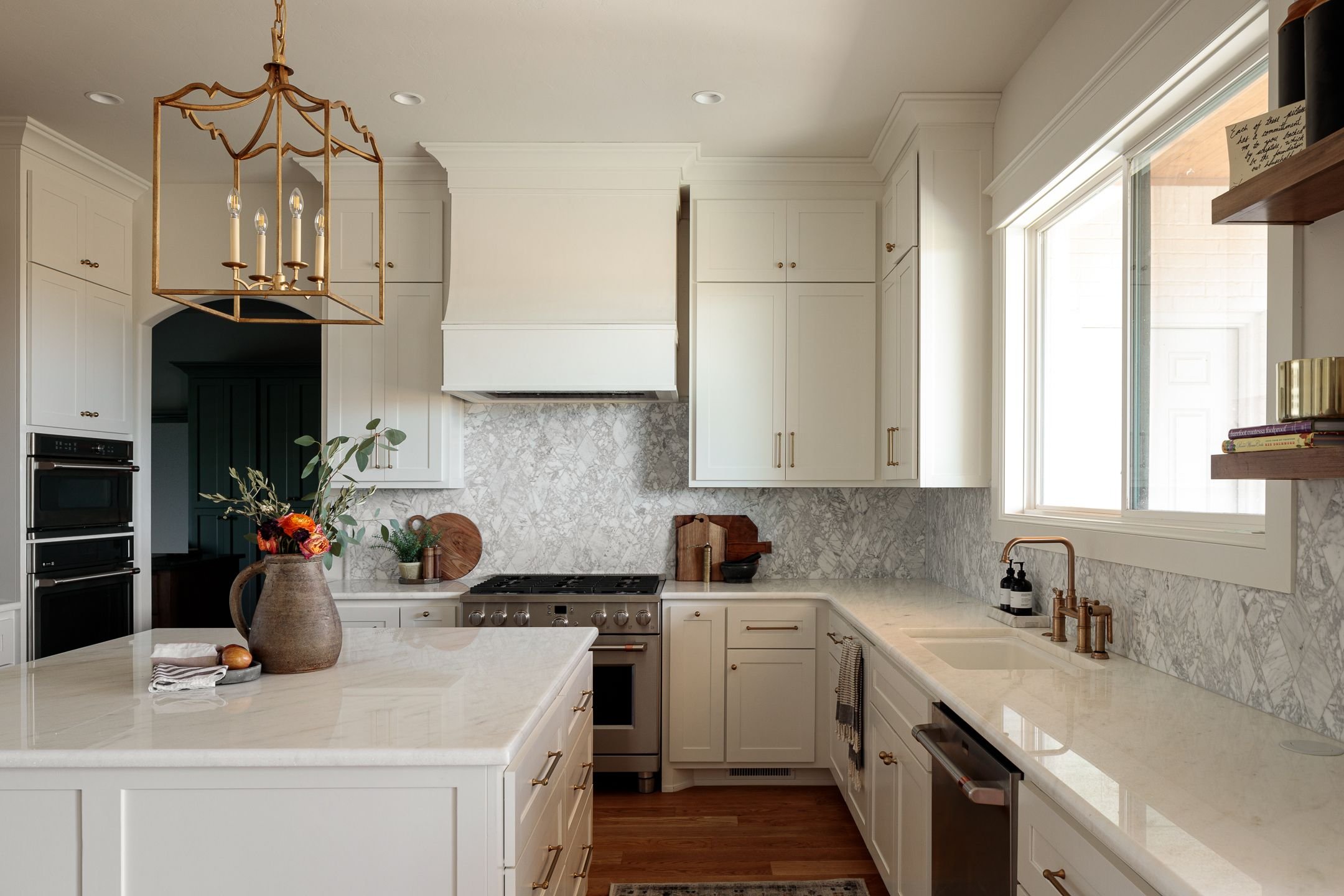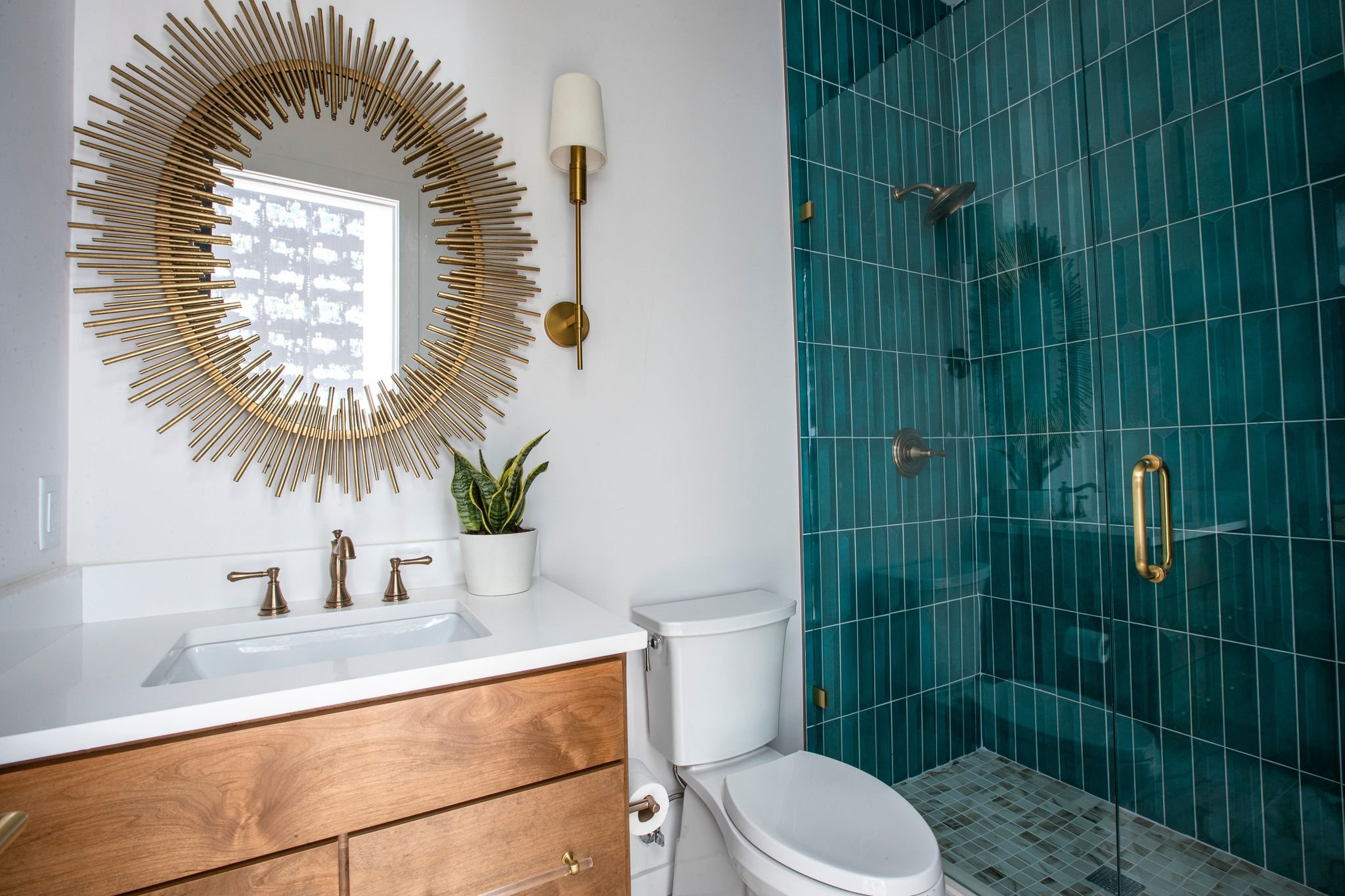Luminous Living: A Guide on Lighting
“I want my home to feel warm and cozy!” is a request we receive often from our clients. Creating a feeling of comfort is an important part of the design process. An easy way to add that feeling to your home is through lighting. Lighting can have a profound effect upon your mood without you even realizing it!
When adding lighting to your home, there are a few things to consider. First, you should evaluate your space and lighting needs. Then, you should consider the tasks you will be completing in the space, and if those tasks require specific lights. Finally, you should select the lighting fixture that will complete your desired look!
When evaluating your space and lighting needs, remember that there are multiple layers of lighting in your home. This means you may have ambient lighting, task lighting, and accent lighting all in the same space. Not sure what each type is? We’ve got you covered:
Ambient lighting: This type of lighting is designed to create a comfortable and inviting atmosphere in a space. It provides a general level of illumination that allows people to move around safely and see their surroundings without harsh shadows. Ambient lighting can come from sources such as ceiling-mounted fixtures, wall sconces, or even natural light from windows. It's often the first layer of lighting used in a room.
Task lighting: This type of lighting is focused on a specific task or activity, such as reading, cooking, or working on a computer. Task lighting provides concentrated, directional light that illuminates the area where the task is being performed. Common sources of task lighting include desk lamps, under-cabinet lighting in kitchens, and pendant lights above dining tables.
Accent lighting: This type of lighting is used to highlight specific features in a room, such as artwork, architectural details, or decorative objects. Accent lighting adds drama and depth to a space by creating contrast and drawing the eye to particular areas. It can come from sources such as track lighting, uplights, or wall-mounted picture lights. Accent lighting is often the final layer of lighting used in a room.
Three main lights we purchase are chandeliers, pendants and sconces. We want to provide our secrets on how to hang these different lighting types perfectly, every single time.
Chandelier
Before selecting light fixtures for your living room, consider your seating areas! If you have a large sectional sofa, you may select a large chandelier to center over it. If you have a smaller sofa and accent chairs, you may center the chandelier to the room, rather than the furniture. When hanging a chandelier in an office or dining room, it is best to center the chandelier to the room. It is also best to hang your chandelier at the “standard” height, which is no lower than 7 feet from the ground. Perfect chandelier placement has the ability to completely transform your space!
Pendant
Layering your lighting in the kitchen is key! Layering recessed lighting with island pendants and undercabinet lights creates a completed design. Selecting the right size pendant can be challenging. When selecting pendants, it is important to know the size of the island. Then, you can use your island measurement to determine the size and number of pendants needed. When hanging your pendant, it is best practice for it to be 36 inches above the island countertop surface.
Sconce
We love adding sconces to our bedroom and bathroom designs to elevate the space! When selecting sconces, there are a few things to consider. First, if you are hanging your sconce in the bedroom, it is best to hang the sconce 60 to 65 inches up from the floor. Also, if you are hanging your sconces inside decorative paneling, it is important to select an appropriately sized fixture for the space. Knowing your dimensions will make shopping easier! When hanging sconces in a bathroom, it is important to select your mirror first so that the sconces compliment the design and are hung in the appropriate location.
Fixture Placement Tips and Tricks
The most difficult part of selecting lighting fixtures, in our opinion, is finding one that is the perfect size for the space. We have learned a trick that we want to pass on to you to make this easier!
If a fixture is going to be the main light source for the room: measure the length and width of the room. Then, add those two numbers together. Lastly, convert that sum from feet to inches to find the ideal diameter of your fixture. For example, if your room was 10 feet long and 12 feet wide, that would total 22 feet when added together. So, your fixture should be approximately 22 inches in diameter!
If a fixture is going to be centered over a piece of furniture, measure the piece, divide that number by two, and you have your fixture placement!
Need assistance with lighting design in your home? We would love to help! Check out our design portfolio here to see more of our work.
Leave us a comment below letting us know which space in your home has lighting that you love!







